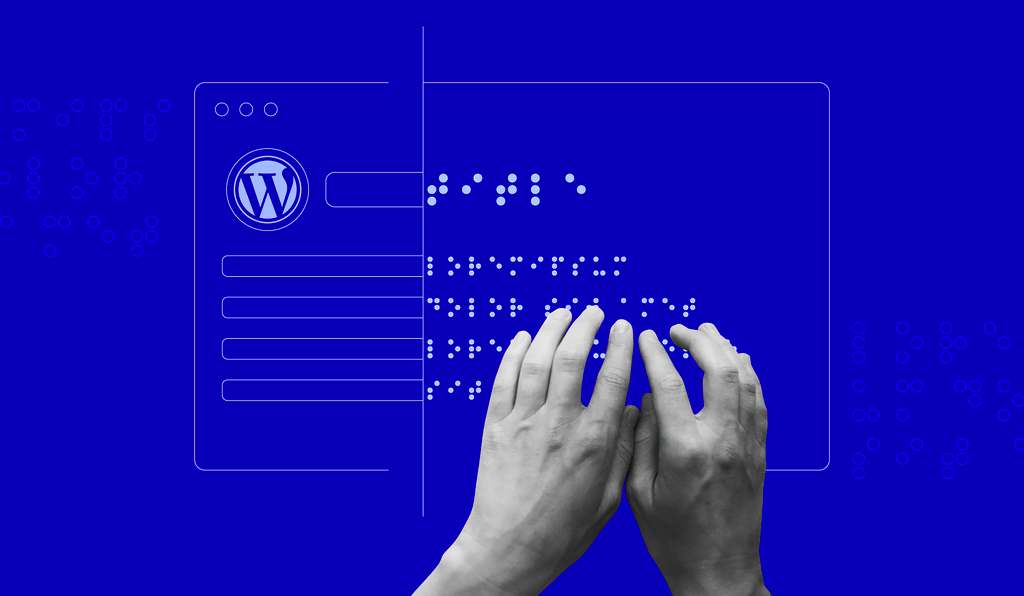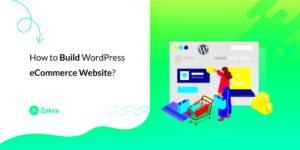In today’s digital age, accessibility isn’t just a nice-to-have; it’s a necessity. E-commerce sites, like any other online platforms, need to cater to everyone, including individuals with disabilities. When you think about it, what good is a beautiful, well-designed website if a portion of your audience can’t experience it? By implementing accessibility options, your e-commerce site becomes more inclusive, and you widen your customer base. Plus, it’s not just ethical—it can also have a positive impact on your bottom line!
Understanding Accessibility Standards and Guidelines

Before diving into how to make your e-commerce WordPress site accessible, it’s essential to understand the standards and guidelines that govern web accessibility. The most widely recognized set of guidelines comes from the Web Content Accessibility Guidelines (WCAG).
These guidelines are designed to ensure that online content is usable for everyone, including people with various disabilities. Here are some key principles:
- Perceivable: Information and user interface components must be presented to users in ways they can perceive. This means using text alternatives for non-text content, providing captions for videos, and ensuring content is adaptable in different ways.
- Operable: User interface elements must be operable. This entails making sure that all functionalities are available from a keyboard, providing enough time for users to read and use content, and avoiding content that could cause seizures.
- Understandable: Information and operation of the user interface must be understandable. This includes using clear and simple language and ensuring that web pages appear and operate in predictable ways.
- Robust: Content must be robust enough that it can be interpreted reliably by a wide variety of user agents, including assistive technologies. This means following best practices for coding and ensuring compatibility with various devices and browsers.
Following these guidelines not only helps make your e-commerce site accessible but also enhances usability for all users. As you design and optimize your site, keep these principles in mind—your audience will thank you!
Key Accessibility Features for WordPress E-commerce Sites
When it comes to making your WordPress e-commerce site accessible, there are several key features that can significantly enhance the user experience for all visitors, including those with disabilities. Accessibility isn’t just a legal requirement; it’s about ensuring that everyone can navigate and interact with your site effectively. Let’s explore some essential accessibility features:
- Keyboard Navigation: Many users rely on keyboard shortcuts to navigate websites. Ensuring that your e-commerce site is fully operable via keyboard inputs allows those with mobility impairments to shop without frustration.
- Screen Reader Compatibility: Screen readers convert text into speech, allowing visually impaired users to understand your site’s content. Use proper HTML structure, including headings, lists, and alt text for images, to improve screen reader interaction.
- Text Alternatives for Visual Media: All images should have descriptive alt text, and video content should include captions. This ensures that users who can’t see images or hear videos still receive the same information.
- Color Contrast and Font Size: Make sure that text is legible by using high-contrast colors and allowing users to adjust font sizes. This is particularly important for users with visual impairments who may need to increase text size for better readability.
- Clear Navigation and Labels: Use easy-to-understand labels for buttons and links to guide users through their shopping experience. Make sure the navigation is intuitive, allowing users to find products without confusion.
- Responsive Design: Your site should work seamlessly across all devices, including phones and tablets. A responsive design makes it easier for users to interact with your site, regardless of how they’re accessing it.
Incorporating these features not only helps comply with accessibility standards but also enhances the overall user experience for everyone visiting your e-commerce site.
How to Enable Accessibility Options in WordPress
Enabling accessibility options on your WordPress e-commerce site can be a straightforward process with the right steps. Here’s how you can make your site more inclusive:
- Choose an Accessible Theme: Start by selecting a WordPress theme that is designed with accessibility in mind. Look for themes that are labeled as “accessibility-ready.” You can find these in the WordPress Theme Repository.
- Install Accessibility Plugins: There are various plugins available that can enhance your site’s accessibility features. Some popular ones include:
- Customize Your Site’s Color Scheme: Use the WordPress Customizer to adjust your site’s color scheme to ensure proper contrast. This can usually be found under Appearance > Customize.
- Add Alt Text to Images: When adding images to your site, always include descriptive alt text. You can do this in the Media Library or directly within the page or post editors.
- Focus on Keyboard Accessibility: Test your site’s navigation using only a keyboard. This will help identify any elements that can’t be accessed with the Tab key or Enter key, which can be modified as necessary.
- Run Accessibility Audits: Tools like the WAVE Foundation’s Web Accessibility Evaluation Tool or the Axe Accessibility Checker can automate the process of finding accessibility issues on your site. Regular audits can help you keep track of improvements or new issues.
By following these steps and continuously evaluating your site, you can create an e-commerce experience that is welcoming and navigable for all users. Embracing accessibility not only shows inclusivity but can also increase your customer base and loyalty.
Choosing the Right E-commerce Plugins with Accessibility in Mind
When setting up an e-commerce WordPress site, the choice of plugins can dramatically influence the overall accessibility of your online store. Accessibility shouldn’t be an afterthought—it’s something you need to prioritize from the start. Let’s discuss some key factors you should consider when choosing e-commerce plugins.
- Compatibility: Ensure that the plugin you choose is compatible with accessibility standards like WCAG (Web Content Accessibility Guidelines). Look for reviews or documentation stating compliance.
- Screencast Compatibility: Check if the plugin works well with screen readers. Test plugins using tools like NVDA or JAWS to verify how they handle product descriptions and other elements.
- Keyboard Navigation: Your chosen plugins should allow users to navigate through essential site features using only their keyboard. This feature is particularly important for individuals who can’t use a mouse.
- Customizable Elements: Accessibility fits differently for various stores. Opt for plugins that offer customizable features, allowing you to adjust colors, contrast ratios, and text sizes as per your audience’s needs.
- Regular Updates: The web is constantly evolving, so choose plugins that are regularly updated. This ensures they are maintained according to current web accessibility practices.
Some popular e-commerce plugins that prioritize accessibility include WooCommerce, Easy Digital Downloads, and Ecwid. These plugins not only serve basic e-commerce functions but also focus on creating a more inclusive shopping experience. Keep in mind that it’s not just about picking any plugin; you want to choose one that aligns with your vision for an accessible and user-friendly online store.
Designing Accessible Product Pages
Creating accessible product pages is crucial for ensuring all users can easily interact with your e-commerce site. A well-designed product page will not only improve usability for people with disabilities but will also enhance the overall shopping experience for everyone. Here’s how you can approach this:
- Clear Headings and Structure: Use semantic HTML to structure product pages. Each page should be broken down with clear headings (H1, H2, etc.) to help users navigate with ease.
- Descriptive Alt Text for Images: Since many users will rely on screen readers, provide meaningful alt text for all product images. Describe the images’ content and functions concisely.
- ARIA Landmarks: Implement ARIA (Accessible Rich Internet Applications) roles to label different sections of your page (like headers, footers, and sidebars). These assistive technologies help users understand the layout of the page.
- Error Identification: When users make mistakes in form entries—like an incorrect ZIP code or invalid card information—ensure that your error messages are clear, visually distinct, and easily identifiable through screen readers.
- Responsive Design: Ensure product pages are designed responsively. Users on different devices need to have accessible experiences, so test your pages on multiple screen sizes.
Don’t forget to involve users in your testing process! Ask for feedback from those who rely on accessibility options, so you can make informed improvements. Remember, accessible product pages not only enhance user experience; they can also lead to higher conversion rates as more users find your online store easy to use!
Best Practices for Accessible Navigation and Checkout Processes
Creating a seamless experience for all users is essential, especially when it comes to navigation and checkout processes on your e-commerce WordPress site. Here are some best practices to ensure that everyone, including individuals with disabilities, can easily navigate and complete their purchases:
- Use Clear Headings: Organize your content using headings (H1, H2, H3) effectively. This not only helps screen readers but also enhances the overall user experience.
- Keyboard Navigation: Ensure that all navigational elements can be accessed using a keyboard. Users with mobility impairments often rely on keyboard shortcuts.
- Consistent Layout: Keep your layout consistent across pages. Users should feel familiar with the interface, knowing where to find things without confusion.
- Descriptive Links: Use descriptive text for hyperlinks. Instead of “click here,” say “view our product range” to provide context, making it more meaningful for screen reader users.
- Simple Checkout Steps: Streamline your checkout process by minimizing the number of steps required to complete a purchase. Use progress indicators to show the user where they are in the process.
- Error Identification: Clearly indicate errors during the checkout process. Highlight the field with the error and provide constructive feedback so users can correct it easily.
- Accessible Forms: Ensure that all form fields are labeled properly. Use ARIA labels when necessary to help screen reader users understand what information is required.
- Color Contrast: Make sure there’s a high contrast between the text and background colors, particularly in navigational menus and call-to-action buttons. This helps users with visual impairments.
Implementing these best practices will not only enhance accessibility but will also improve conversion rates as customers find it easier to navigate your site and complete their purchases.
Testing Your E-commerce Site for Accessibility
Once you’ve made your e-commerce WordPress site accessible, you’ll want to ensure it remains usable for everyone. Testing for accessibility should be an ongoing part of your site maintenance. Here are some effective strategies to consider:
- Automated Testing Tools: Utilize tools like WAVE, Axe, or Accessibility Checker to get an initial assessment of your site’s accessibility issues. These tools can highlight errors in code, missing alt text, and more.
- User Testing: Engaging real users with disabilities in usability testing can provide invaluable feedback. Their experiences can highlight areas of confusion or difficulty that automated tools may miss.
- Browser Developer Tools: Use the built-in accessibility features in modern browsers like Chrome and Firefox. These can help you inspect elements, check ARIA attributes, and verify keyboard navigation.
- Screen Reader Testing: Test your site using screen readers such as JAWS, NVDA, or VoiceOver. Listening to how your content is read can reveal comprehension issues and missing information.
- Regular Check-ups: Set a schedule for regular accessibility checks, especially after you make significant updates or add new features. Keeping accessibility at the forefront will help maintain an inclusive shopping environment.
- Accessibility Policies: Develop and implement an accessibility policy that outlines your commitment to accessible design. This ensures everyone on your team is aware and accountable.
Testing your site for accessibility is not a one-time task. As technology and standards evolve, it’s crucial to stay committed to providing an accessible shopping experience for all users.
9. Continuously Improving Accessibility Based on User Feedback
When it comes to ensuring your e-commerce WordPress site is accessible, it’s not a one-and-done deal. Accessibility isn’t just about compliance with guidelines or meeting standards; it’s about real users interacting with your site. And who better to inform your improvements than the users themselves? Collecting and acting on user feedback can lead to a more inclusive shopping experience for everyone.
Here’s how you can effectively gather and implement user feedback:
- Surveys and Polls: Regularly send out surveys to your users to gauge their experience regarding accessibility features. Ask specific questions like, “Did you find our site easy to navigate?” or “Were the images and videos accessible to you?”
- User Testing: Involve actual users, especially those with disabilities, in usability testing sessions. Observing them as they navigate your site can provide valuable insights that you might overlook.
- Feedback Forms: Make it easy for visitors to provide feedback by incorporating a simple form on your site. Ensure it’s accessible and intuitive, so users feel comfortable sharing their thoughts.
- Accessibility Widgets: Use accessibility tools or plugins that allow users to customize their experience. Keep track of which features are most commonly adjusted to identify areas needing improvement.
Once you gather feedback, prioritize actionable insights. Create a roadmap that outlines how you’ll address these suggestions. Remember, accessibility is an ongoing journey. By consistently refining your approach based on real feedback, you can create an e-commerce site that welcomes everyone.
10. Conclusion and Resources for Further Learning
Improving accessibility in e-commerce WordPress sites is not just a checkbox initiative; it’s about making your online store inclusive for all users. By implementing proven strategies and tools, you can enhance the shopping experience for people of various abilities. Remember, accessibility benefits not only users with disabilities but also the general public, ultimately expanding your customer base.
As you embark on this journey, keep in mind:
- Start Small: It’s more effective to implement incremental changes than to overhaul your entire site at once.
- Stay Updated: Accessibility standards and user needs continue to evolve. Regularly educate yourself on the latest practices.
- Involve Your Team: Make accessibility a part of your company culture. Train your team to consider accessibility in every aspect of web development.
Here are some excellent resources to further your learning:
| Resource | Description | Link |
|---|---|---|
| Web Content Accessibility Guidelines (WCAG) | The standard for web accessibility that provides comprehensive guidelines. | WCAG Quick Reference |
| W3C Web Accessibility Initiative | A global effort to improve web accessibility for people with disabilities. | W3C WAI |
| AcessibilityOz | Offers practical tools and resources for enhancing accessibility. | AccessibilityOz |
| WebAIM | Provides training and resources aimed at improving web accessibility. | WebAIM |
Embrace accessibility not just as a requirement, but as a unique selling proposition that caters to all customers. Let’s make the online shopping experience a pleasant one for everyone!



